Oftentimes, the only thing a civilization has left for the modern world to find are their timeless pieces of art. While it might seem like one of those sad facts of life, there is so much more that ancient Mesopotamia provides. For example, as you are reading this, keep in mind that Mesopotamia developed the first writing system. They were the first to build cities, and the first to create an empire. Just about everything we have today wouldn’t be possible without those who came before.
That said, Mesopotamia also happens to have some of the best pieces of art the world has ever known. There’s so much to talk about, that I can list their amazing art for hours. However, I’m only going to place their most influential pieces to give you a quick and comprehensive look into the top examples of Mesopotamian art.
The Ishtar Gate
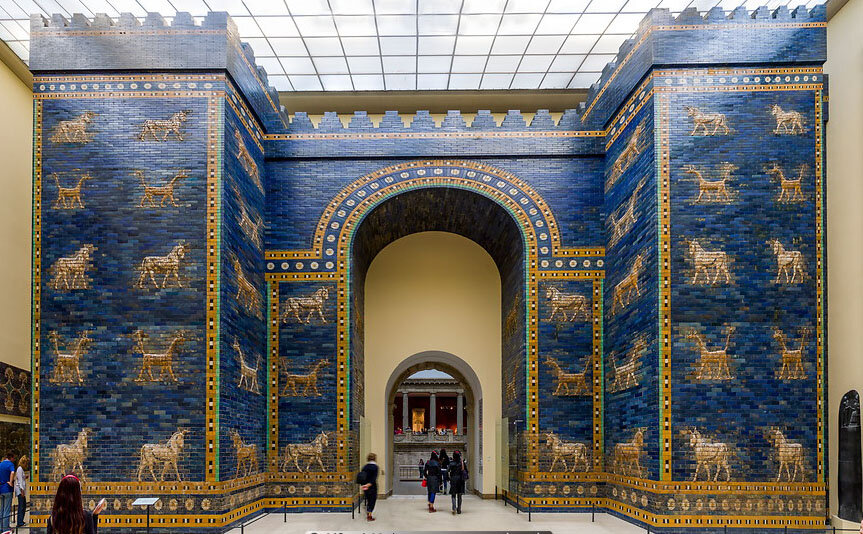
Let’s start with, without a doubt, one of the most tantalizing pieces of Mesopotamian art, and an example of their grand vision. Imagine being alive thousands of years ago, during the time of Nebuchadnezzar II, entering the fabled Babylon for the first time. You go through the north gate and see this giant, imposing, beautiful structure. You also realize that it is one of many, each one grander than the last.
The Gate of Ishtar looks like something that would be created in the modern day, as it amazes even us modern folk. Whether it’s due to ostentatiousness or a need to protect their city (or both), there’s no denying that the Gate of Ishtar is an incredible piece of Mesopotamian history.
The Stele of Hammurabi

Mesopotamia had many incredible leaders, with Hammurabi being one of the most notable. The Stele of Hammurabi showcases written law—the earliest record of written law—and is proof that even thousands of years ago, mankind was doing its best to create as much order as possible. The law is not something to be made on a whim, and Hammurabi proves that with his code.
One of the coolest things about the Stele of Hammurabi is the writing system, cuneiform, which we’ll get into in a bit. The fact that it’s written in the world’s first writing system turns it into a piece of art more than it does a record of law. That said, Hammurabi’s code had some very harsh laws, but it was a step in the right direction.
The Lamassu
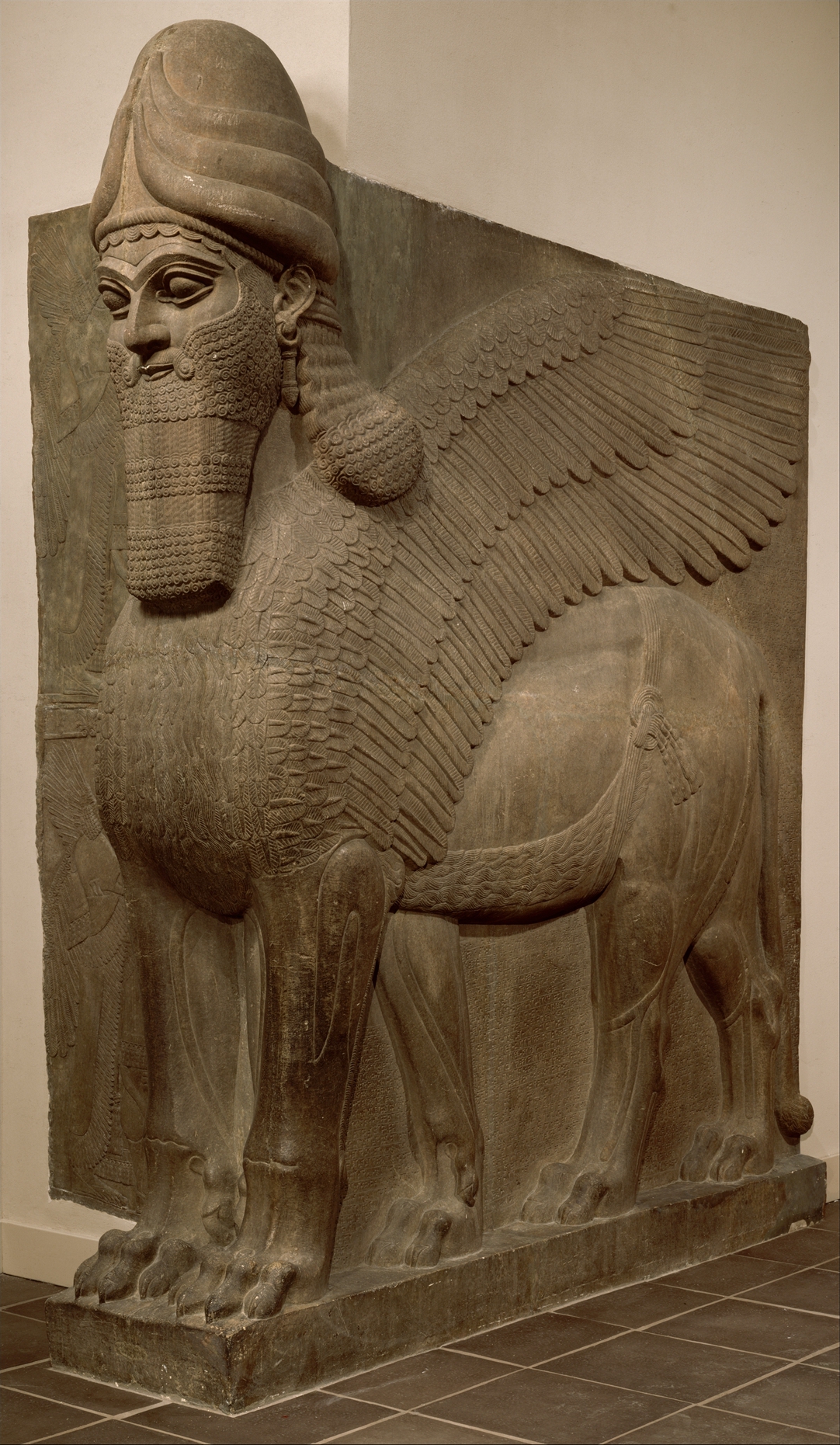
When talking about the lamassu as an art piece, it doesn’t necessarily point to a specific work. The lamassu is a consistent figure in the world of ancient Mesopotamia, as it’s a celestial being meant to protect their great temples. Not only did it serve as a guardian for temples, but they would also engrave the lamassu into tablets and bury it under doorways to act as protection from outside elements.
The lamassu has the head of a human, the body of a bull, and the wings of a great bird. Almost all the pieces concerning the lamassu are large and imposing, as they were meant to inspire awe. Needless to say, most people of the modern world are indeed awed by the lamassu.
Ashurbanipal and His Queen in the Garden

Next, we have a beautiful art piece showcasing king Ashurbanipal and his queen in a garden. While the name of the piece is rather straightforward, there are quite a few things of note when looking into the meaning of the engraving. First and foremost, it shows the royal pair enjoying themselves, which is a rare look into the life of royalty.
Another thing to consider is the fact that Ashurbanipal had his queen with him. Most Mesopotamian works did not show their queens, which means they likely didn’t hold as important a role as the king during such times—at least not enough where the queen was immortalized in art. In fairness, many Mesopotamian art pieces did not show their people lounging around, either. Ashurbanipal must have loved his wife dearly to be enjoying daily life with her in his garden.
The Bull Lyre
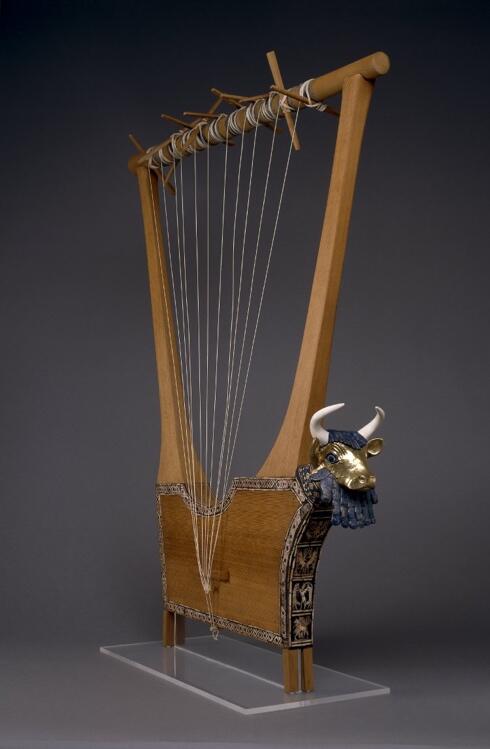
What is a list about ancient art if it didn’t also include instruments from back in the day? In this case, we have the bull-headed lyre of ancient Ur, which was found in the tomb of Queen Puabi, who lived around 2680 BCE. The interesting thing is that no one really knows if the lyre was created to be played. Considering it was found in the tomb of the queen, archaeologists can only surmise that it was meant to keep the queen company during her journey to the afterlife.
One of the things that sets the bull lyre apart is in the name—the bull head was created out of a lapis-lazuli inlay. As if that wasn’t enough, there are also scenes depicting the royal court adorning the lower half of the lyre. It’s a rather beautiful sendoff to a queen the Mesopotamians likely respected.
The Victory Stele of Naram-Sin
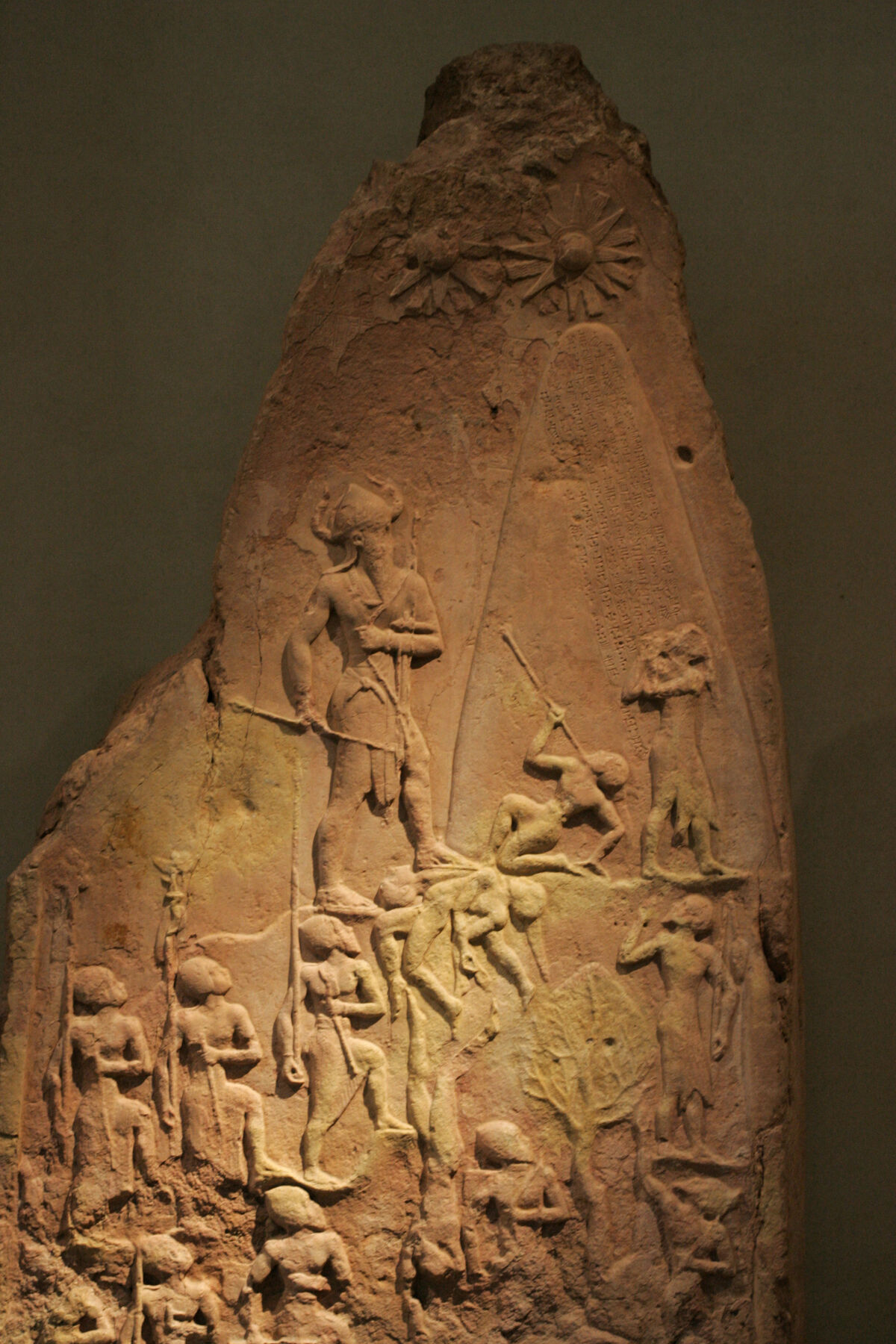
Of the different empires that have graced the land of ancient Mesopotamia, the Akkadians were perhaps the most imposing. The culture of the Akkad was that of warfare, and it was a civilization that honored their greatest warriors with almost god-like status. In fact, while it was said that the deceased kings became gods—not too different from the Pharaoh of ancient Egypt—some of the greatest warriors were also depicted with godlike attributes.
This particular stele shows the Akkadian king Naram-Sin’s victory over the Lullubi who lived in the mountains of Zagros. It depicts the king as towering over both the Lullubi and his troops.
Statues of Tell Asmar
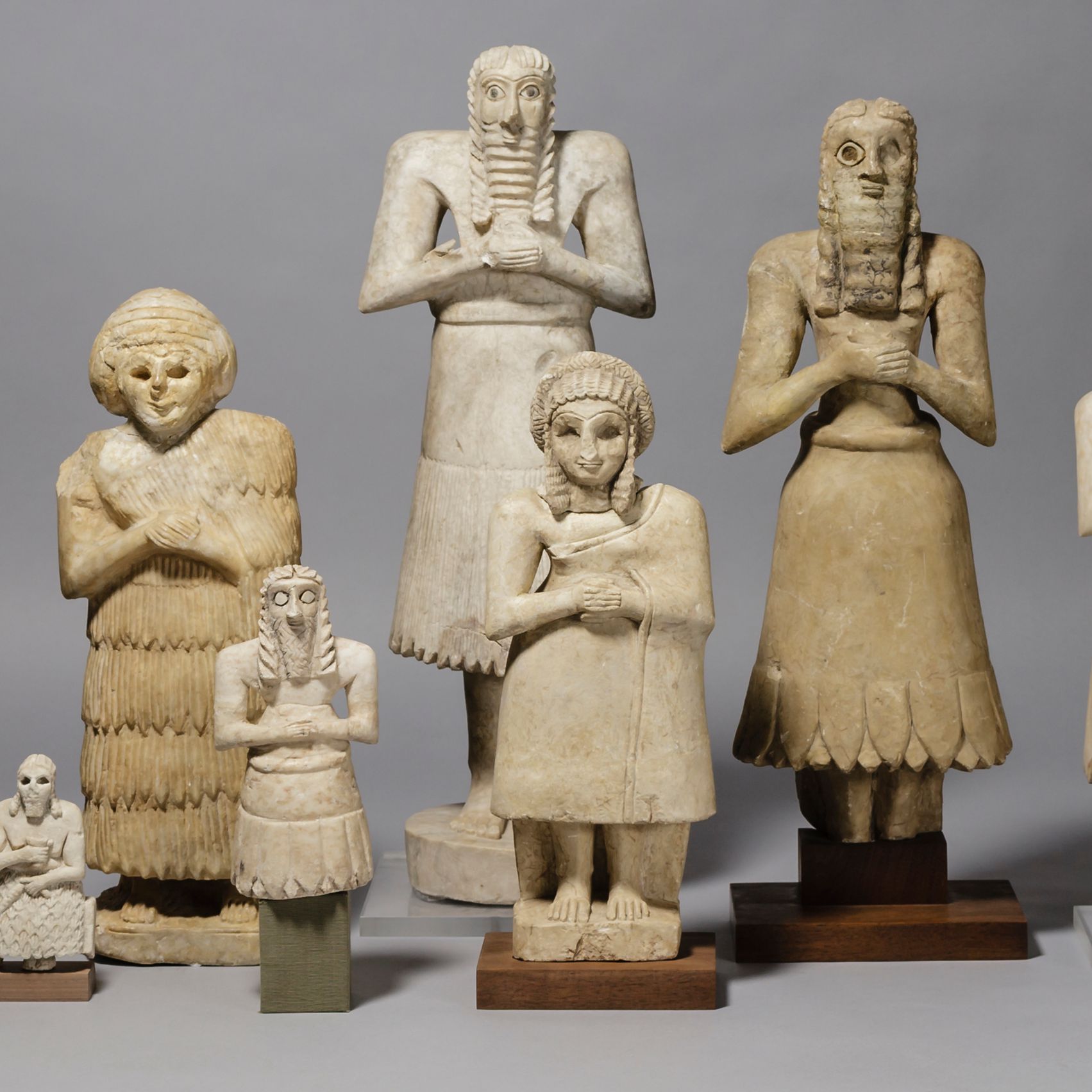
The statues of Tell Asmar undoubtedly have an eerie quality to them, particularly with their eyes. Compared to many other works of ancient Mesopotamia, these statues were built with rather large eyes—and was one of the examples used in potentially proving the existence of ancient aliens. Just as people love to believe that ancient aliens were responsible for the pyramids, these statues, with their extremely large eyes, were said to be depictions of aliens.
The more grounded theory is that these statues of Tell Asmar were simply statues of the deceased. Just as we pay tribute to our dearly departed, so too did the ancient Mesopotamians.
The Standard of Ur
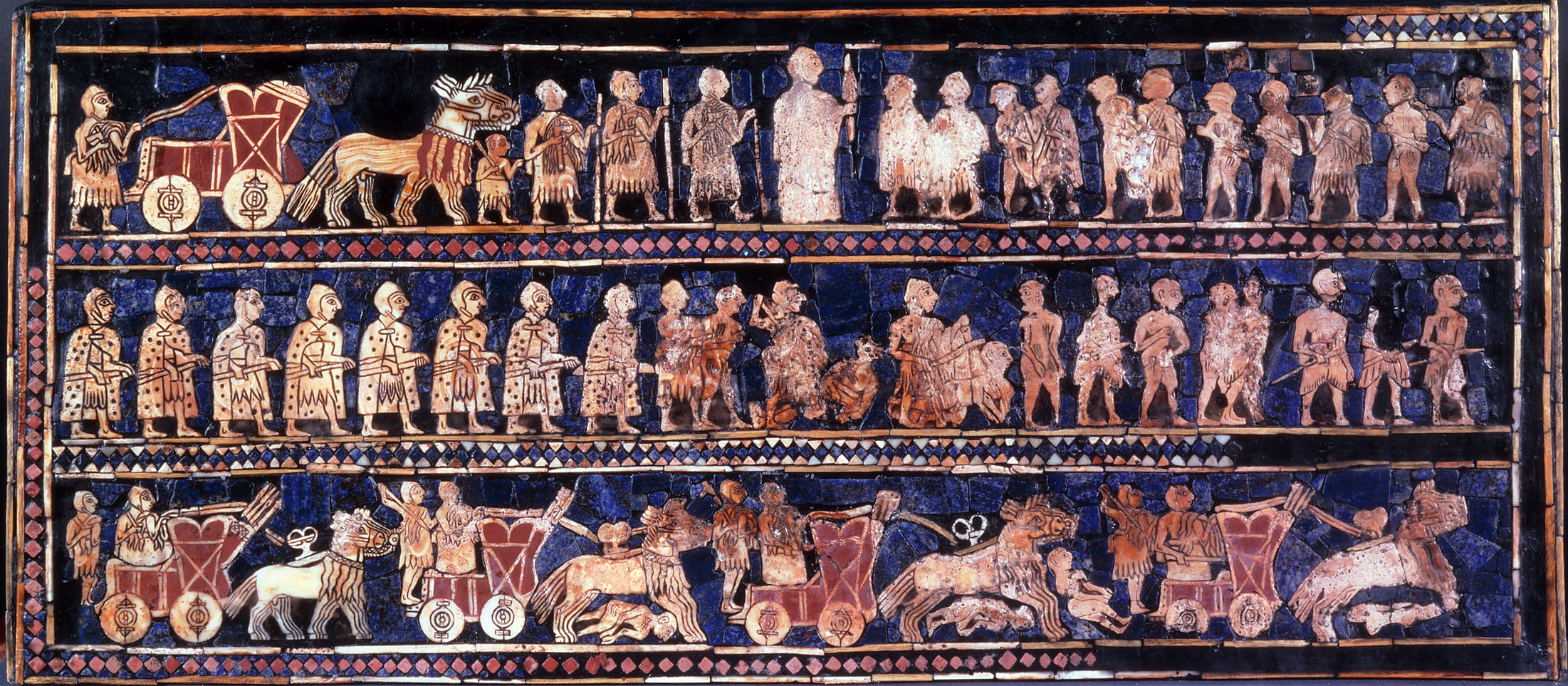
The Standard of Ur is one of the most popular pieces of Mesopotamian art, even if much of the piece has already been lost to time. While the name suggests it was made from cloth, the Standard of Ur is a mosaic piece. The Mesopotamians loved to use lapis-lazuli for their works, which shows in the blue background of the mosaic. They used red limestone for the depictions of the Mesopotamian people.
Despite being a relatively small piece, the reason why the Standard of Ur is so popular is it showcases so much about life in ancient Mesopotamia. The two surviving fragments of the Standard have been aptly named war and peace.
The Great Ziggurat of Uruk
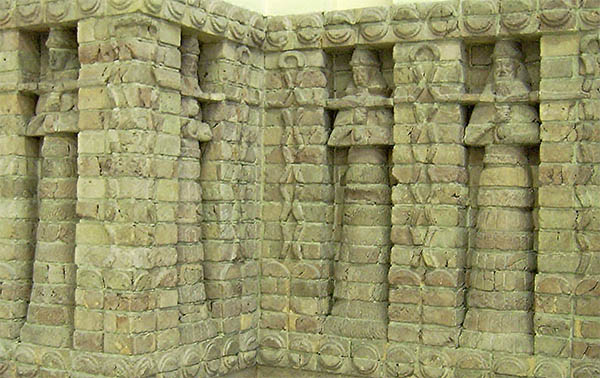
Of the many heroes of ancient Sumer and Mesopotamia, perhaps one of the most notable figures is Gilgamesh, who was immortalized in the Epic of Gilgamesh. He hailed from Uruk, which was naturally one of the most beautiful ancient cities of the old world. Of its many beautiful structures, the Great Ziggurat of Uruk was undoubtedly one of the most imposing.
That said, it’s a shadow of its former self mainly due to the fierce elements. The Iraqi sun is not something to be taken lightly, and when combined with the fierce dust storms, is the primary reason why so much of ancient Mesopotamia is lost to time. That said, we can still imagine what it must’ve been like back in the day based on the pieces we can find.
Cuneiform as a Whole
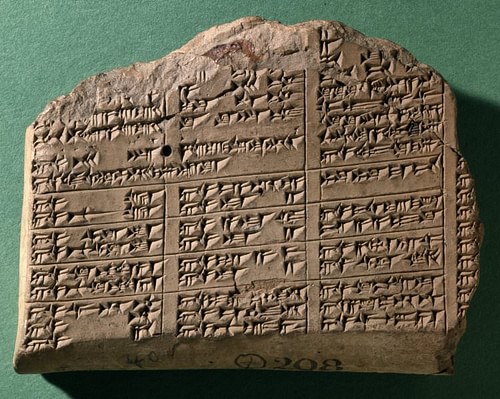
Last but certainly not least, we talk about perhaps the greatest contribution of Mesopotamia to the world—the first writing system. While ancient Mesopotamia was also responsible for many world firsts, the writing system truly opened things up and showed just how much potential there was to grow a civilization. With writing, the Mesopotamians learned how to effectively communicate with traders, which meant they could trade with other cities.
The writing system of the ancient Mesopotamians can also be seen as a work of art—the most important work of art known to man. Cuneiform is where all other writing systems come from, making it one of the most important inventions since the discovery of fire. Without cuneiform to help civilizations grow, it’s very likely the modern world would be incredibly different today. Writing is a necessary part of life, as it’s what a civilization needs to grow.